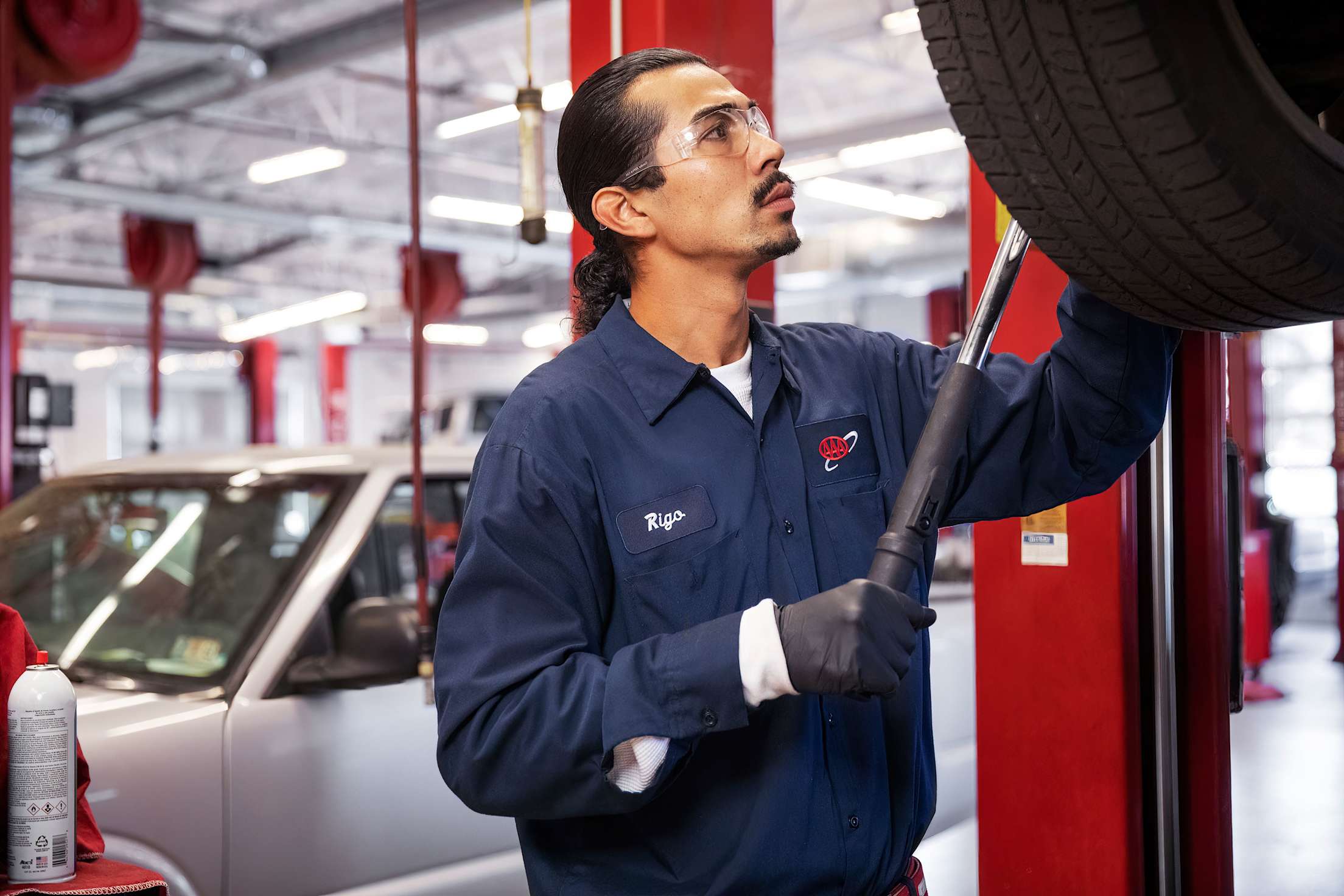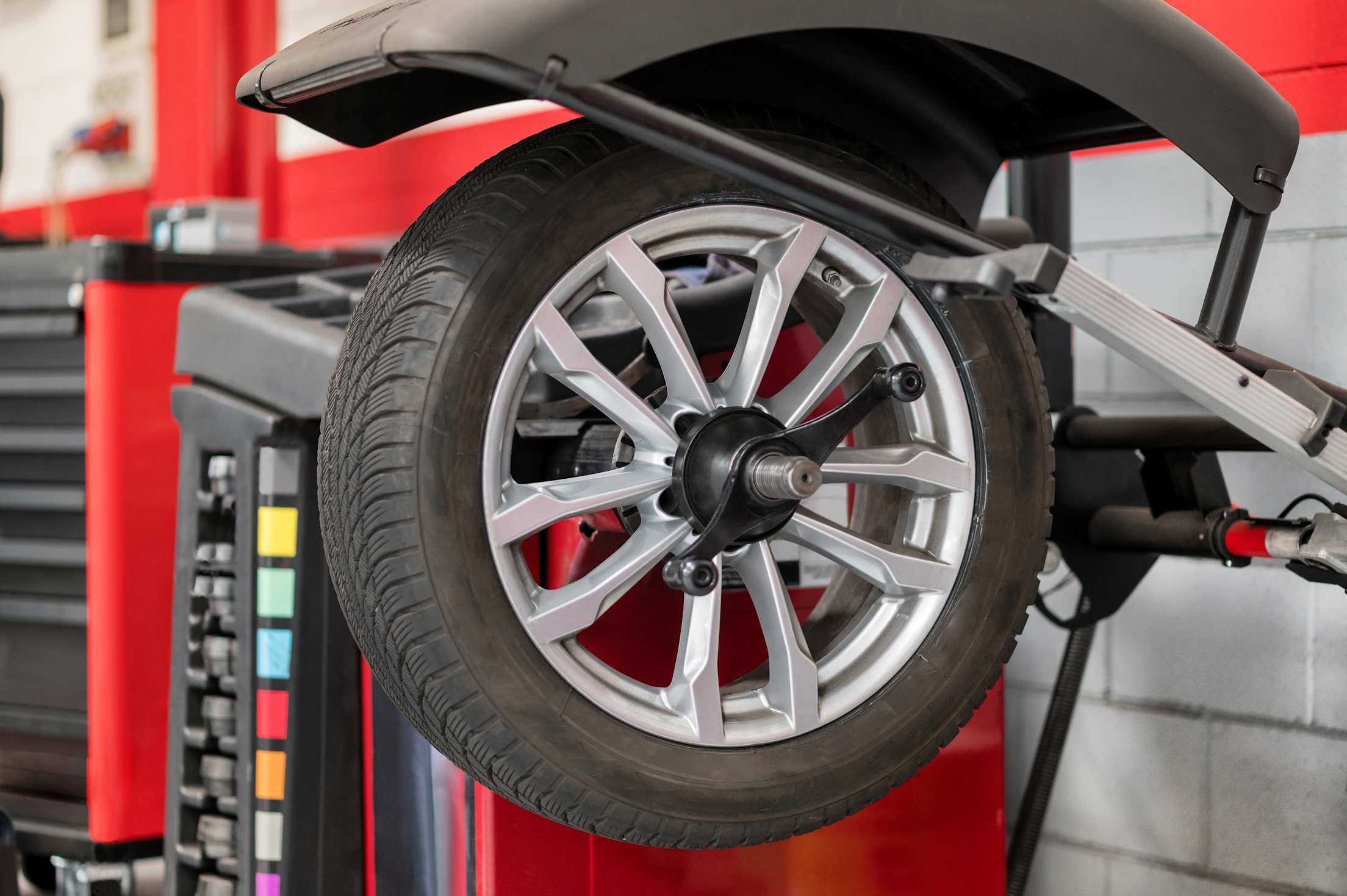
Does Your Car Need an Alignment or Tire Balance?
Here’s how to decide.

Have you ever wondered what all those extra services are on your bill when you replace your tires? Two of them are likely wheel balancing and wheel alignment, both services that keep your car operating the way it should and protect against premature tire wear.
Tires are expensive, but ensuring your wheels (which consist of a tire mounted on a rim) are aligned and balanced can help extend their life, saving you money in the long run, says David Bennett, senior automotive manager at AAA.
What is a wheel alignment?
It’s inevitable to hit a pothole or curb or two when driving. While it might not seem like much, this impact may cause your car to go out of alignment, which means that your wheels are no longer riding at the correct angle, tilt, or position that they should be. If uncorrected, wheels that are not properly aligned can cause rapid tire wear and strain your steering and suspension systems.
An alignment—also known as a four-wheel, two-wheel, or front-end alignment—is a service where a technician adjusts the angle, tilt, and position of your wheels and and suspension, says Bennett. This is done using high-tech equipment. Your car is put on a specially designed lift, and sensors are attached to each wheel. Those sensors connect to a computer, which in turn tells the technician what adjustments are needed in real time.
Alignments typically take 30 to 60 minutes for most cars, and technicians make three main adjustments: camber, caster, and toe. Camber is the outward or inward tilt of the wheel, and caster is the forward or backward displacement of the wheel. Toe is the direction where the wheel points and the most common adjustment needed when an alignment is done.

When is an alignment needed?
You’ll want to get a wheel alignment whenever new tires are installed to ensure they wear properly and avoid damage.
Additionally, you’ll want to get an alignment in the following circumstances:
- Your steering wheel is pulling while you’re driving.
- Your steering wheel is off-center or you feel like you need to hold it crooked to drive straight.
- You’ve had a steering-related repair such as replacing a tie rod, steering rack, etc.
- A wheel was impacted during a collision.
- Frame or structural damage has occurred.
- Your tires are wearing unevenly and there is no other underlying cause.
Sometimes, wheels being out of alignment is the symptom of a larger issue such as an underlying steering or suspension problem. An alignment can help identify these problems, and your mechanic will advise you if additional repairs are needed.

What is tire balancing?
Wheel balancing—sometimes called tire balancing—corrects uneven weight distribution that prevents a wheel from rolling smoothly. An improperly balanced tire will cause vibration, uneven tire wear, or other problems.
After a tire is installed onto your rim, the mechanic will mount the wheel onto a dynamic computer balancer. The machine spins the wheel to check the balance, letting the technician know how much weight is needed for proper balancing and where. There are two types of weights, sticky and clip-on, one or both of which the technician will adhere to the tire before rechecking the balance.
The wheel(s) can be safely returned to the vehicle once balanced.
When is wheel balancing needed?
Wheel balancing should be part of any new tire purchase, whether you buy a complete set or swap out a single tire. If at any point while driving you feel a vibration in your steering wheel, especially at lower speeds, you’ll want to have the balancing redone, says Bennett. Additionally, tire manufacturers recommend balancing your tires for maintenance, ranging from every tire rotation to annually.
Get quality auto repair service from certified technicians and the brand you trust.